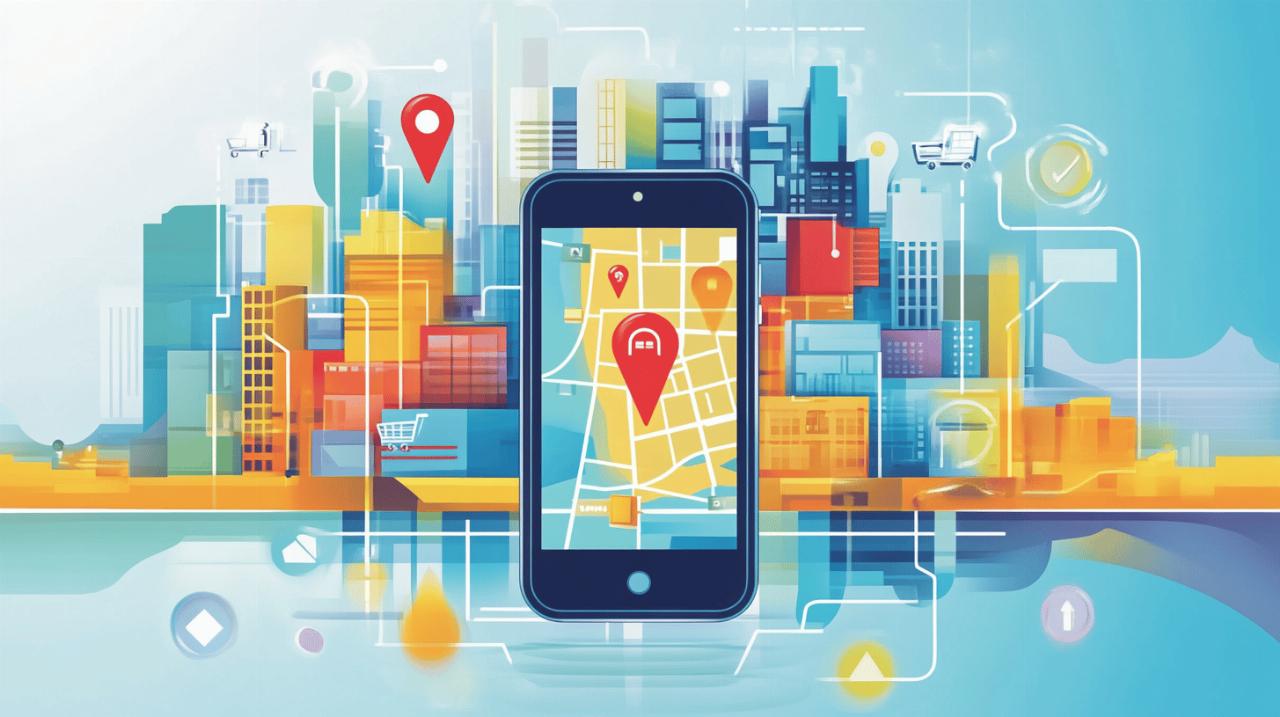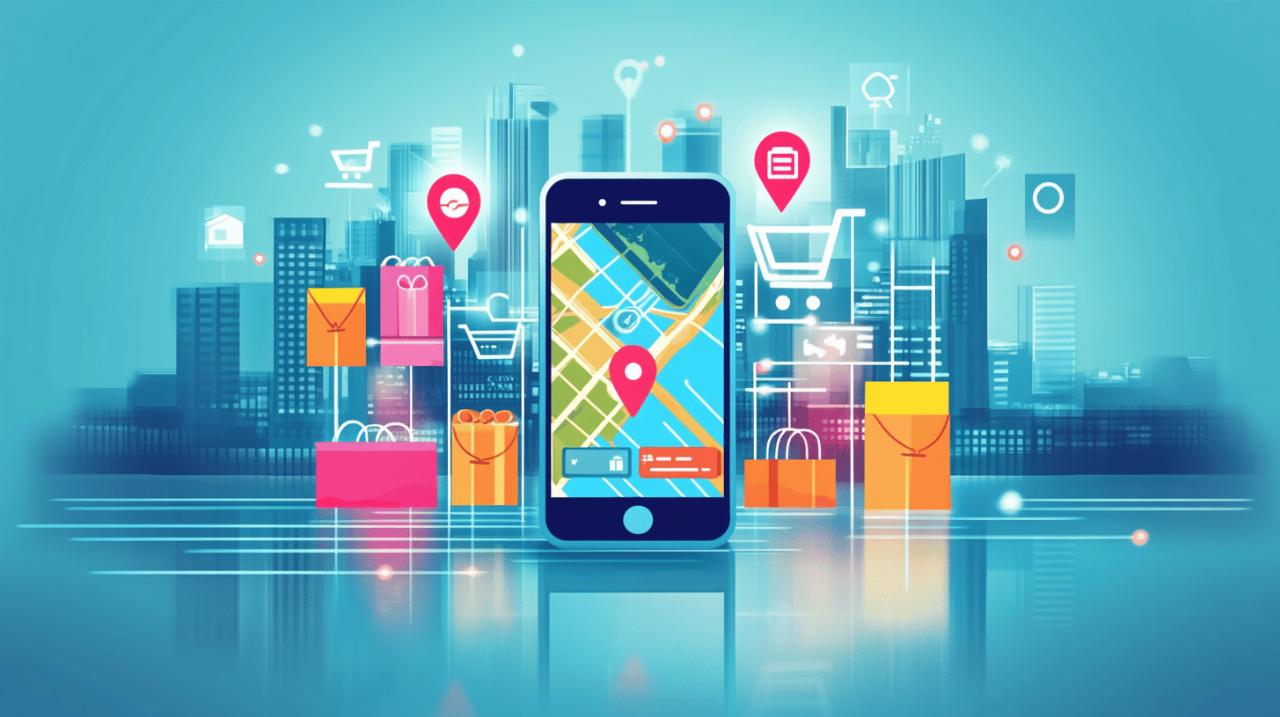
In today’s rapidly evolving e-commerce landscape, businesses are constantly seeking innovative ways to connect with consumers and drive sales. One powerful approach that’s gaining significant traction is location-based marketing—a strategy that leverages geographical data to deliver highly targeted and relevant content to mobile users. This technique is revolutionising how brands engage with customers, creating personalised shopping experiences that boost conversion rates and foster loyalty in the competitive mobile commerce space.
Understanding location-based marketing fundamentals
Location-based marketing harnesses the power of geographical data to deliver tailored messages to consumers based on their physical location. By understanding where potential customers are at any given moment, brands can create contextually relevant communications that resonate with shoppers and inspire action. This approach bridges the gap between digital engagement and physical presence, creating a seamless customer journey across multiple touchpoints. Many successful businesses have integrated tools like https://www.businesstic.es/ into their marketing stack to enhance their location-based strategies and improve overall campaign performance.
The technology behind geolocation tracking systems
The foundation of location-based marketing lies in sophisticated geolocation tracking systems that collect and analyse user location data. These systems employ various technologies including GPS, Wi-Fi triangulation, and Bluetooth signals to pinpoint a consumer’s exact location with remarkable accuracy. Mobile devices continuously generate this valuable data, providing marketers with real-time insights into consumer movements and behaviours. The evolution of this technology has been dramatic—from early cell tower triangulation that provided only approximate locations to today’s advanced systems capable of identifying a user’s position within metres, enabling highly granular targeting opportunities for savvy marketers.
Privacy considerations when collecting location data
While location data offers tremendous marketing potential, its collection raises important privacy concerns that businesses must address. Under regulations like GDPR, companies must obtain explicit opt-in consent from users before collecting and utilising their location information, particularly when targeting EU residents. Despite these regulatory challenges, research indicates that consumers are often willing to share their location data in exchange for tangible benefits—with nearly 90% reportedly open to sharing this information in return for location-based discounts and almost two-thirds willing to do so for loyalty points. Successful location-based marketing requires striking the right balance between personalisation and privacy, ensuring transparency about data collection practices while delivering genuine value to consumers.
Implementing geofencing strategies
Geofencing represents one of the most powerful applications of location-based marketing, allowing businesses to create virtual boundaries around specific geographical areas. When a consumer with an opted-in mobile device enters or exits these predefined zones, it triggers targeted messaging or promotional content. This technique enables brands to engage customers at critical decision-making moments, delivering timely and relevant communications that can significantly influence purchasing decisions and drive conversion. For retail businesses, geofencing can transform foot traffic patterns by alerting nearby customers to exclusive in-store promotions or limited-time offers.
Setting up virtual boundaries for targeted notifications
Creating effective geofences involves strategic planning and precision. Marketers must carefully determine the optimal size and placement of these virtual perimeters based on business objectives and consumer behaviour patterns. Too large a boundary may dilute message relevance, while too small a zone might limit reach. The most successful implementations typically establish geofences around store locations, events, high-traffic areas, or even competitor locations for geo-conquesting campaigns. Once boundaries are defined, businesses can design triggered notifications that deliver compelling, contextually relevant content that motivates action—whether that’s visiting a physical location, making a purchase, or engaging with the brand in other meaningful ways.
Measuring the effectiveness of geofence campaigns
Evaluating geofencing campaign performance requires tracking specific key performance indicators that align with business objectives. Essential metrics include foot traffic increases, conversion rates for promoted offers, customer engagement levels, and overall return on investment. Advanced analytics tools can help marketers collect and analyse this data, providing valuable insights for campaign optimisation. For example, some retailers implementing geofencing strategies have seen remarkable results, with companies like Adidas reporting a 680% ROI increase and Whole Foods achieving a 4.69% conversion rate—significantly outperforming the national average of 1.43%. Regular assessment and refinement based on these metrics ensures that geofencing strategies continue to deliver maximum value.
Personalising mobile shopping experiences
The true power of location-based marketing lies in its ability to create highly personalised shopping experiences tailored to individual consumers. By combining location data with other customer insights such as purchase history, browsing behaviour, and demographic information, brands can develop a comprehensive understanding of consumer needs and preferences. This holistic approach enables the delivery of hyper-relevant content that resonates with shoppers on a personal level, driving engagement and fostering stronger brand connections. As mobile commerce continues to grow, personalisation has become a critical differentiator in an increasingly competitive marketplace.
Tailoring product recommendations based on location
Location data provides valuable context that can significantly enhance product recommendation strategies. By understanding where customers are physically located, brands can suggest items that are particularly relevant to local conditions, seasonal factors, or regional preferences. For instance, a clothing retailer might promote rainwear to mobile users in areas experiencing wet weather, or a restaurant app could highlight popular local specialities to travellers visiting a new city. This contextual relevance dramatically increases the likelihood that recommendations will resonate with consumers and lead to conversions. The most sophisticated systems continuously learn from customer interactions, refining recommendations over time to deliver increasingly personalised experiences.
Creating localised content for different geographic markets
Effective location-based marketing requires content that speaks directly to the unique characteristics and needs of different geographic markets. This goes beyond simple translation to encompass cultural nuances, regional references, and local events or traditions that resonate with specific communities. Brands that excel at localised content develop marketing assets that feel authentically connected to each target region, building stronger relationships with local consumers. This approach might include region-specific imagery, localised promotions tied to area events, or content that addresses specific regional challenges or opportunities. By demonstrating a genuine understanding of local contexts, brands can establish deeper connections with consumers across diverse markets.
Proximity marketing techniques
Proximity marketing focuses on engaging consumers when they are physically close to specific locations, creating opportunities for immediate interaction and conversion. This subset of location-based marketing leverages technologies that can detect consumer presence with exceptional precision, enabling highly targeted messaging within small geographic areas. The immediacy of proximity marketing makes it particularly effective for driving spontaneous purchases and capturing consumers’ attention at critical decision points. As mobile technology continues to advance, proximity marketing techniques are becoming increasingly sophisticated, offering new ways for brands to connect with consumers in meaningful, contextually relevant ways.
Utilising beacon technology in retail environments
Beacon technology represents one of the most precise proximity marketing tools available to retailers. These small Bluetooth transmitters can be strategically placed throughout physical stores to communicate with nearby smartphones, sending tailored messages to shoppers as they move through different departments or linger near specific products. For example, a customer browsing in a specific aisle might receive information about current promotions for nearby items, complementary product suggestions, or helpful usage tips. This granular level of targeting creates opportunities for meaningful engagement at the exact moment when consumers are most receptive, significantly increasing the likelihood of conversion while enhancing the overall shopping experience.
Driving foot traffic to physical stores through mobile engagement
For retailers with brick-and-mortar locations, driving foot traffic remains a critical objective that can be powerfully supported through mobile engagement strategies. Location-based marketing enables businesses to identify potential customers in the vicinity of their physical stores and entice them to visit through compelling offers and messaging. Time-sensitive promotions, exclusive in-store events, or inventory alerts about desired items can create a sense of urgency that motivates consumers to make an immediate store visit. These strategies are particularly effective when combined with geofencing to target consumers within a specific radius of store locations, creating a digital bridge that guides shoppers from online browsing to in-person purchasing.
Location-specific promotions and offers
Strategic deployment of location-specific promotions represents one of the most direct ways to convert geographical insights into tangible business results. By creating special offers that are only available in certain locations or to consumers in specific areas, brands can drive desired behaviours while providing genuine value to their target audience. These promotions leverage the power of exclusivity and relevance, making consumers feel specially selected for offers that align with their current situation and needs. When executed effectively, location-specific promotions can significantly boost conversion rates while strengthening brand perception and customer loyalty.
Designing time-sensitive deals based on customer whereabouts
The combination of time sensitivity and location awareness creates powerful marketing opportunities that can drive immediate action. Limited-time offers triggered by a customer’s presence in a specific location create a compelling sense of urgency that can overcome purchase hesitation. For example, a coffee shop might send a special discount code valid for the next hour to opted-in customers who are within walking distance during a typically slow business period. This approach optimises revenue during off-peak times while delighting customers with unexpected savings. The key to success lies in ensuring that offers are genuinely valuable and relevant to the consumer’s current context, building positive associations rather than creating notification fatigue.
Building loyalty through location-aware reward programmes
Location data can dramatically enhance loyalty programmes by adding a layer of contextual relevance that traditional approaches often lack. By recognising and rewarding customers for their physical presence—whether that’s visiting stores, attending events, or exploring new locations—brands can create more engaging loyalty experiences that drive deeper connections. For instance, a retailer might offer bonus points for in-store visits during specific hours, or a restaurant chain could provide special rewards for customers who visit multiple locations. These location-aware elements add dimension to loyalty programmes, creating more opportunities for meaningful customer recognition while encouraging beneficial behaviours that support business objectives and strengthen long-term customer relationships.



